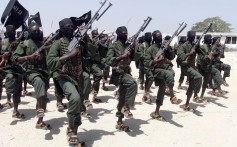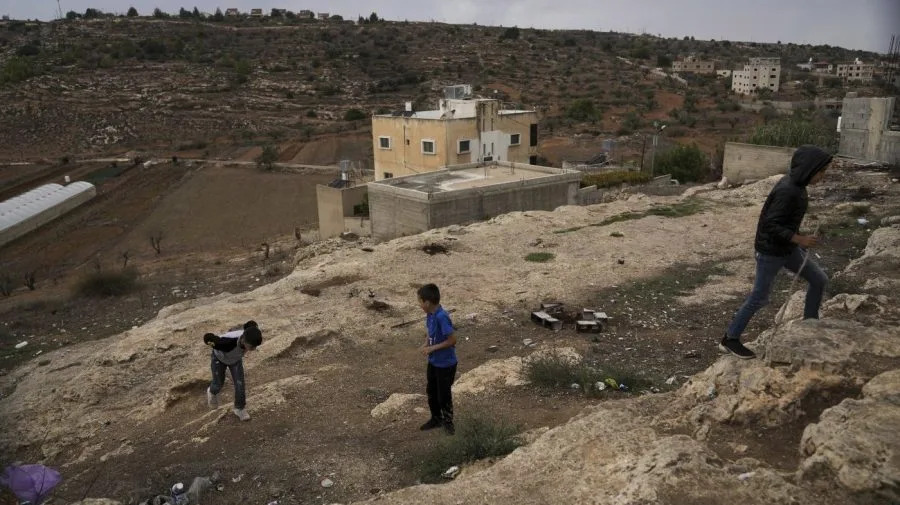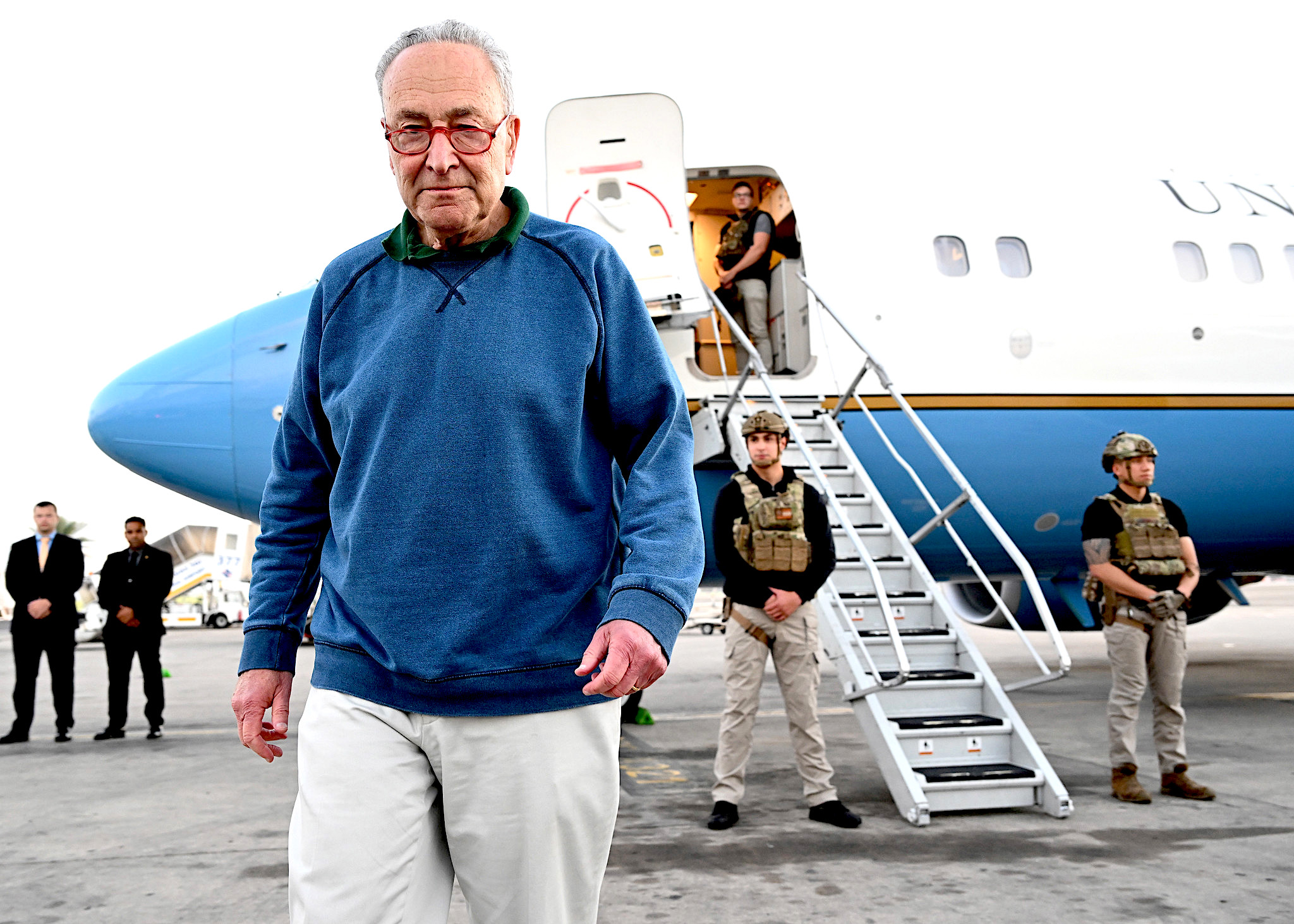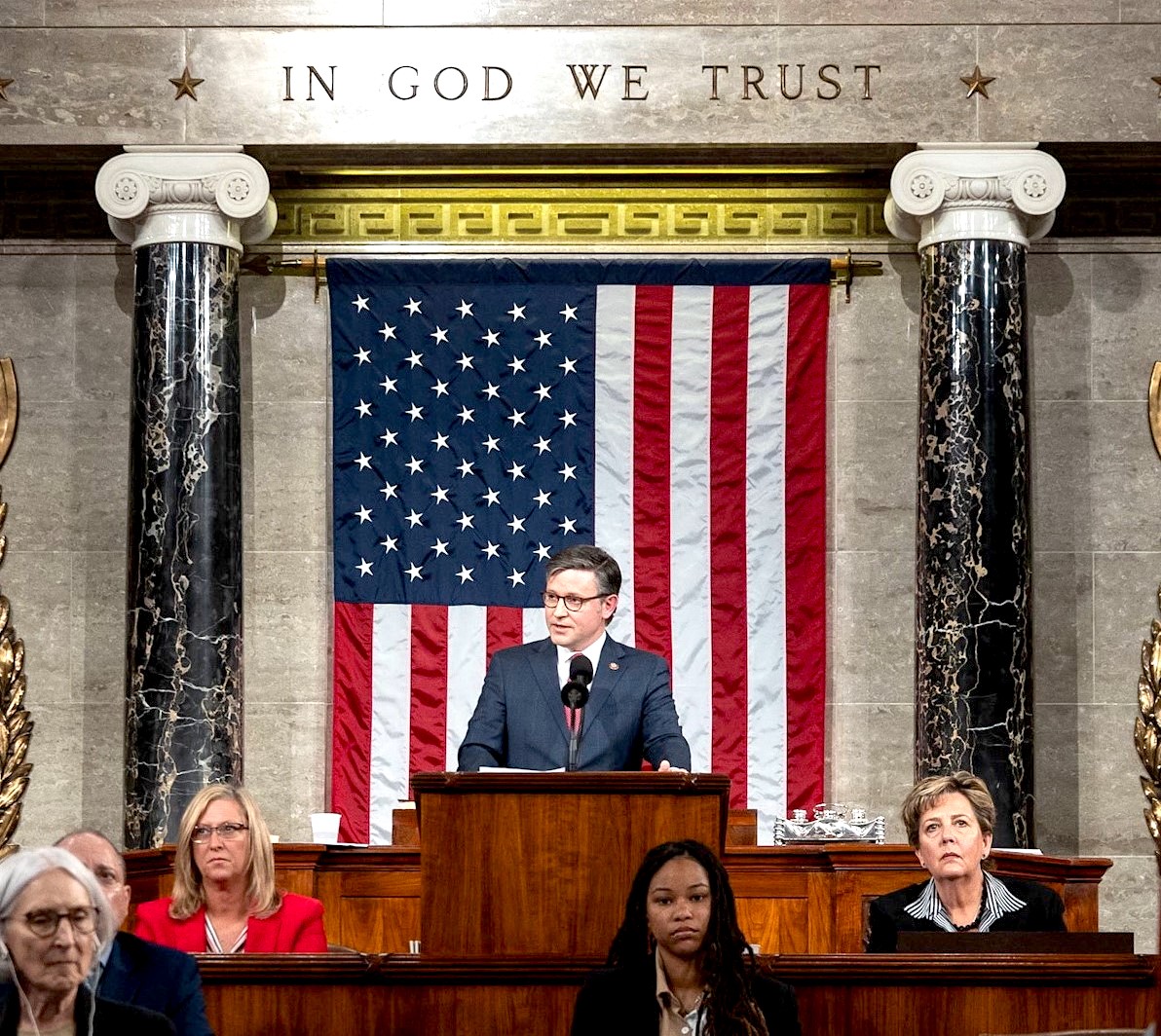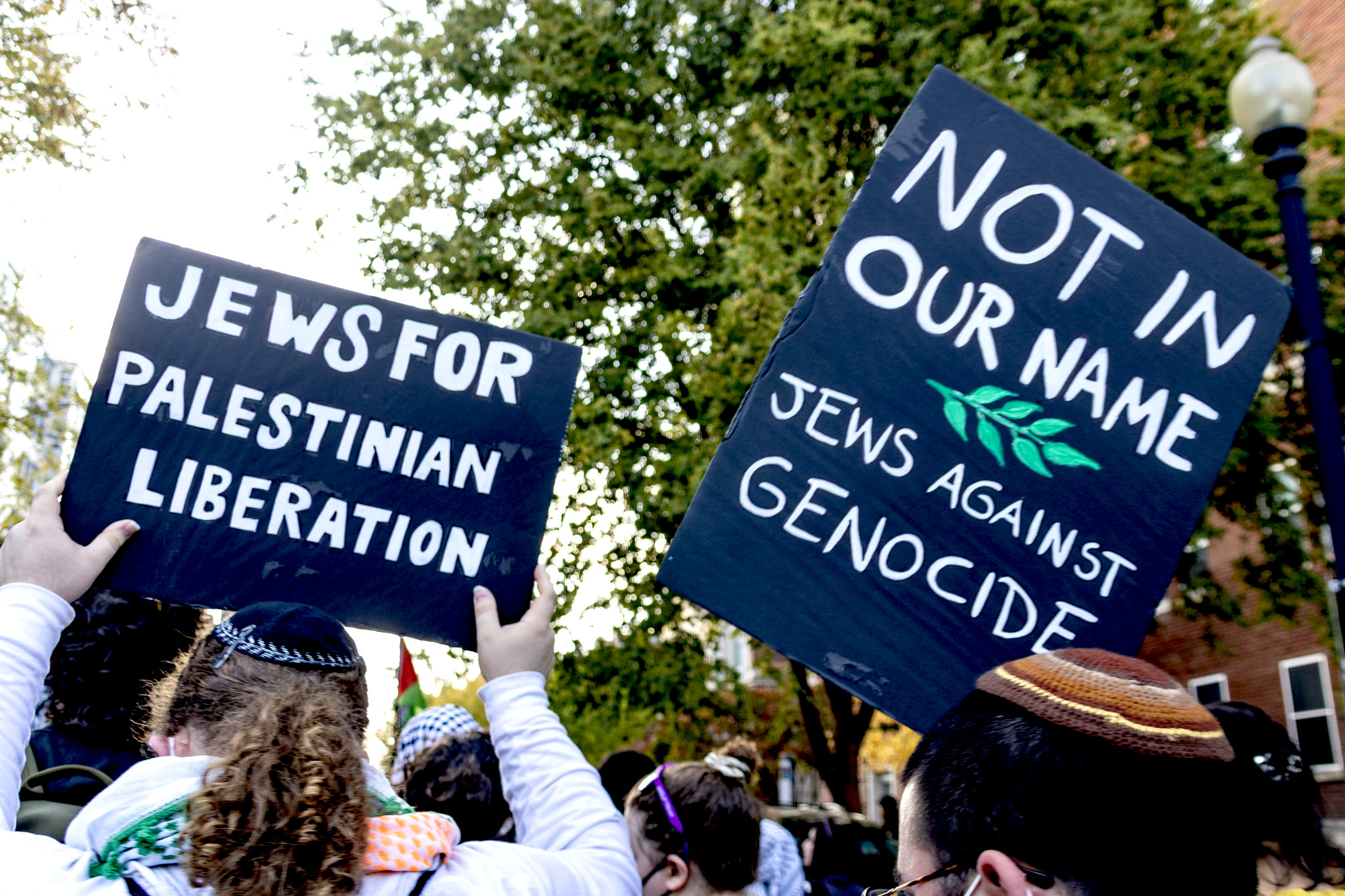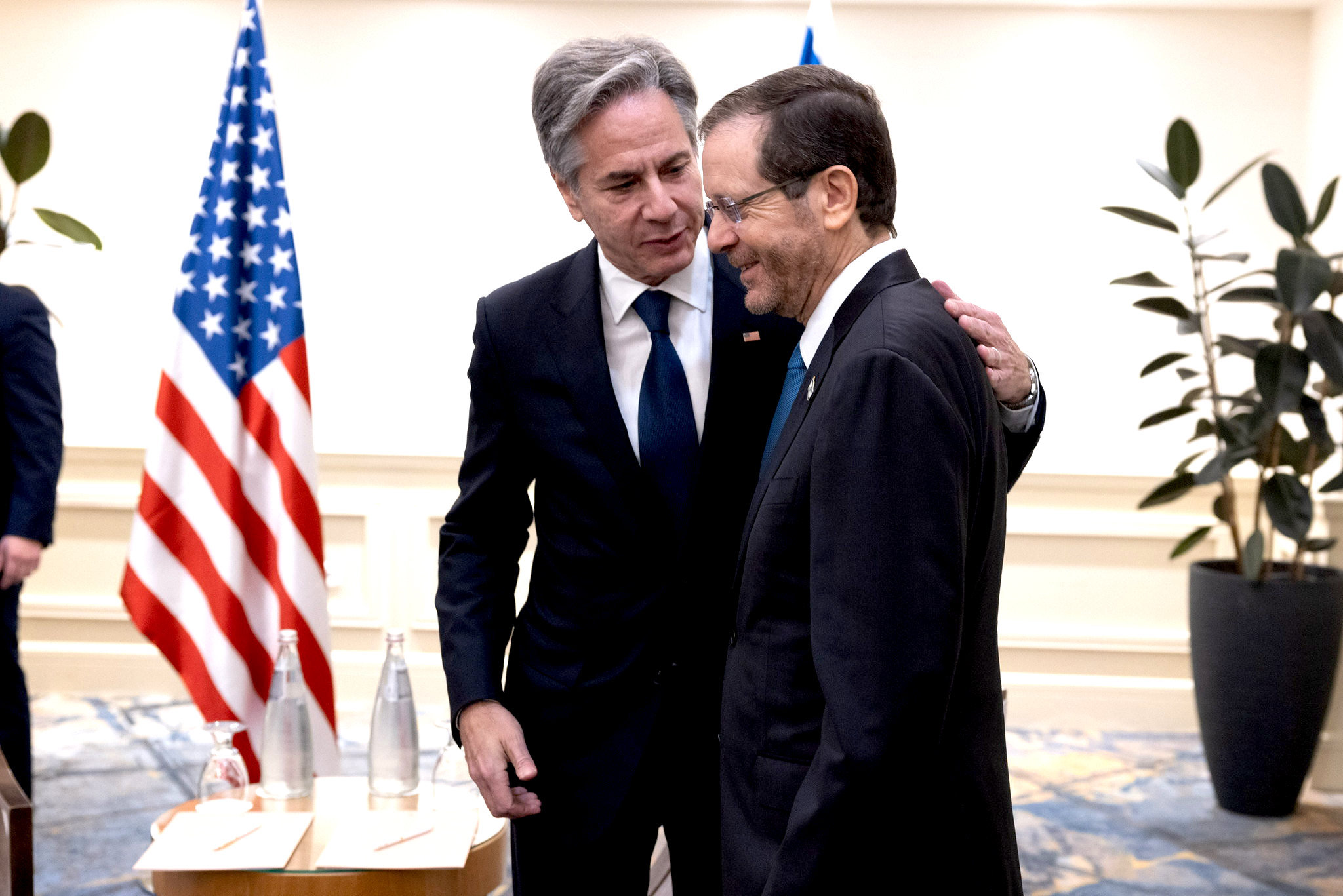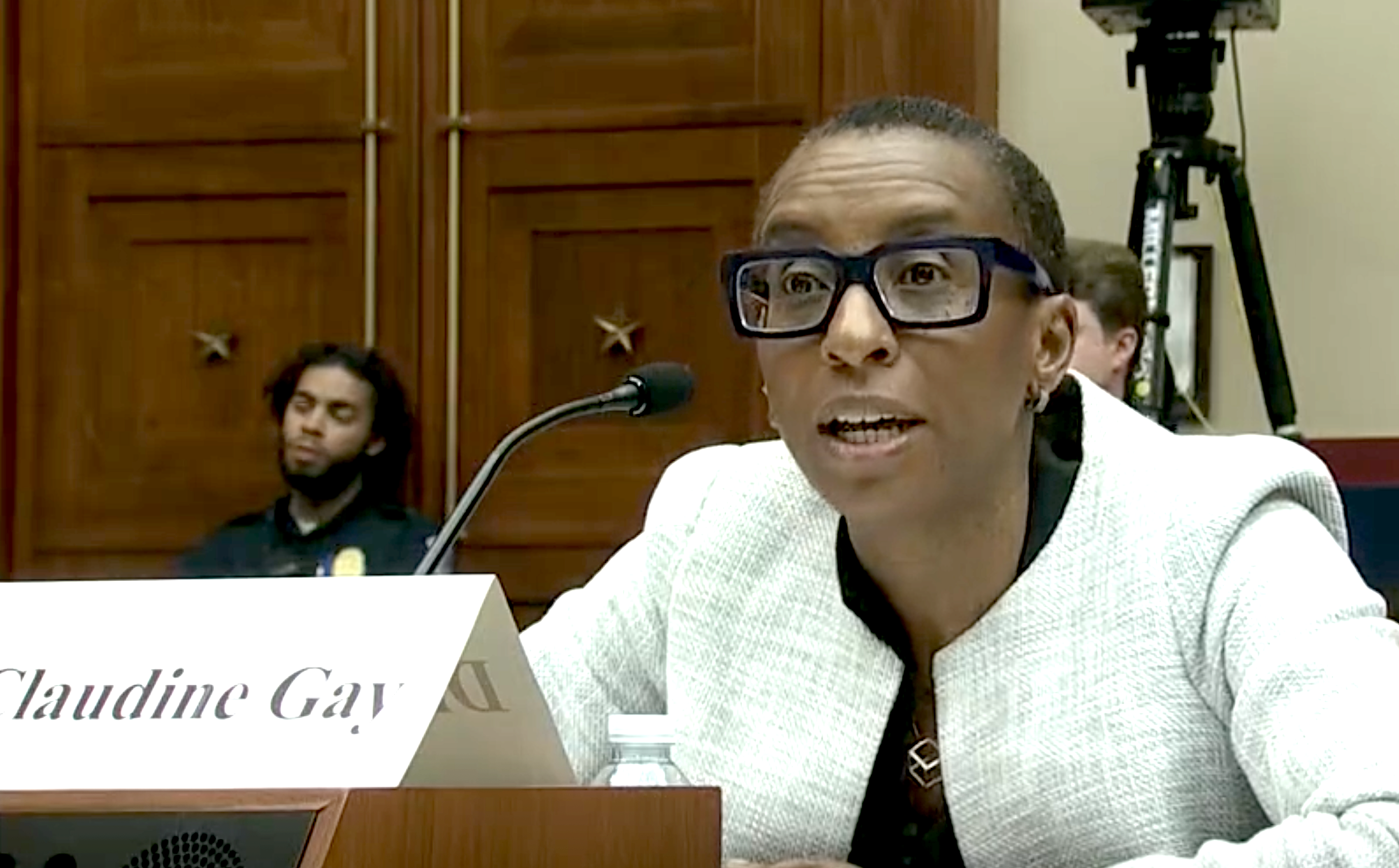NAKBA 2.0
Israeli bombing of Gaza killing and maiming children at a record pace, warn human rights groups
Bel Trew
Sat, December 30, 2023
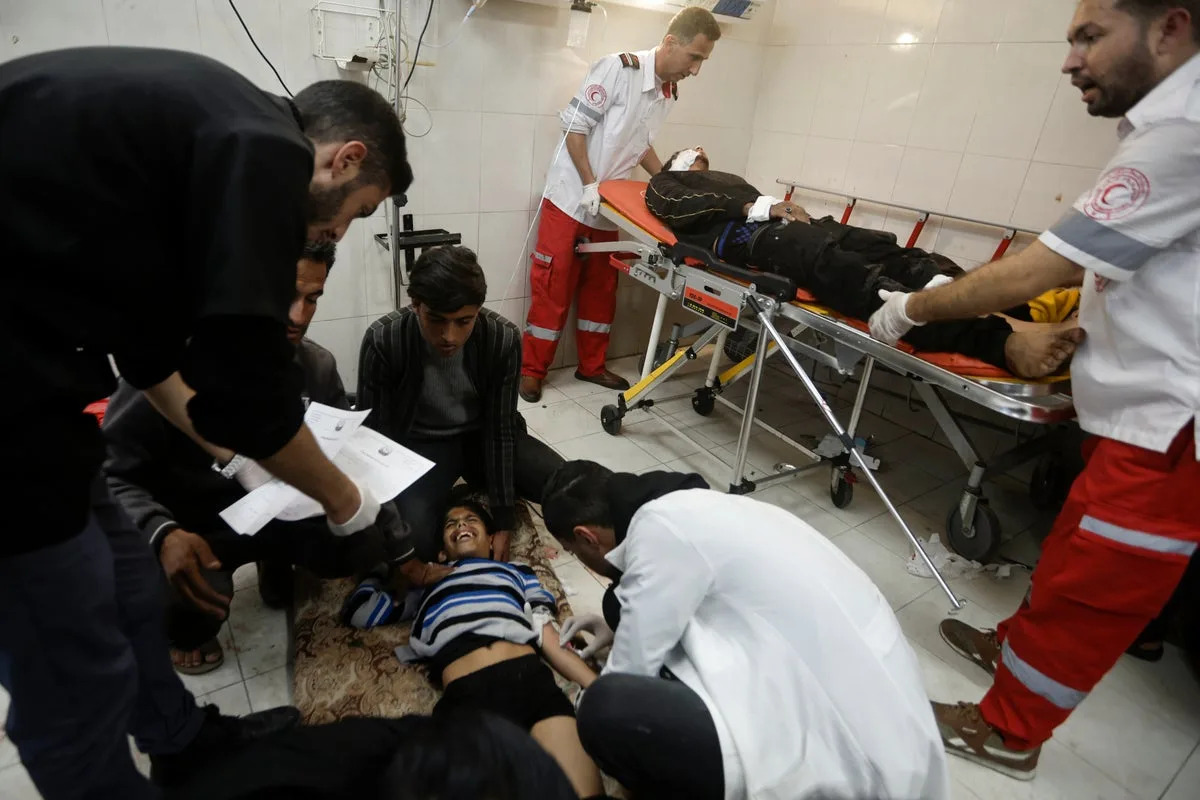
A wounded child is among those to receive treatment in hospital in Khan Younis, Gaza (AP)
Israel’s bombardment of Gaza has caused a record-breaking number of child casualties and a pace of killing “unseen in a generation”, human rights groups have warned, as Israeli tanks push deeper into the besieged strip.
Israel unleashed a total siege and its heaviest targeting yet of Gaza in retaliation for the 7 October attack by Hamas who killed 1,200 people and took 240 hostages.
Since then, Israeli strikes have killed at least 21,000 people, three-quarters of them women and children, while thousands more are feared trapped under rubble, according to the health ministry in the Hamas-run strip.
Israel has questioned the death toll but provided no alternative. Its army has expressed regret for civilian deaths, accusing Hamas of operating in densely populated areas and using civilians as human shields – a charge the group denies.
The speed and intensity of the killings is “record-breaking”, said James Denslow from Save the Children, adding that the charity had estimated more than 30,000 children have been killed or maimed over the past 12 weeks.
They based their calculations on a combination of Gaza ministry of health numbers and UN figures, plus other reports of casualties and those missing on the ground.
“This is the highest number of children killed and maimed in one conflict since 2006 when United Nations records began,” Mr Denslow told The Independent.
“This is also 21 times higher than the number of children killed and maimed in Ukraine last year,” he added.
The UN has verified that 131,311 children have been killed or maimed across conflict situations since 2006. These numbers – which go up to 2022 – are woefully low estimates, particularly in countries such as Syria, where rights groups say accessing the death toll is near impossible.
“But even if we go by the caveated numbers in Gaza, in just over two months they are already a quarter of a way through that total number of children killed and maimed in 17 years,” said Mr Denslow. “For the intensity, it is something I have never seen before.”

Palestinian children wait to receive food cooked by a charity kitchen in Rafah (Reuters)
Jan Egeland, head of the Norwegian Refugee Council, said that aside from the besieged areas of Syria during the worst days of 2015, the “scale of the killing of civilians has not been seen in a generation”.
He said such a child death toll had not likely been recorded since the genocide in Rwanda 30 years ago.
“In an ocean of human misery and in a world that seems to be falling apart, Gaza stands out,” he added.
An Israeli military spokesperson said: “The IDF [Israel Defense Forces] is committed to mitigating civilian harm during operational activity. In that spirit, the IDF makes great efforts to estimate and consider potential civilian collateral damage in its strikes... IDF military lawyers are on hand at all levels of command to ensure that strikes comply with international legal obligations, including proportionality.”
More than 2.3 million people – half of them children – live in Gaza, a tiny 42km strip that even before the war was subject to a crippling 15-year siege by both Israel and Egypt.
The UN has repeatedly begged for a ceasefire saying there are no safe areas within the strip and no way to get out for civilians who have been displaced multiple times since October and are running out of food, water and medical supplies.
Despite international pleas to wind down the attack, including from its ally the US, Israel has only escalated its ground offensive in Gaza in the closing days of the year.
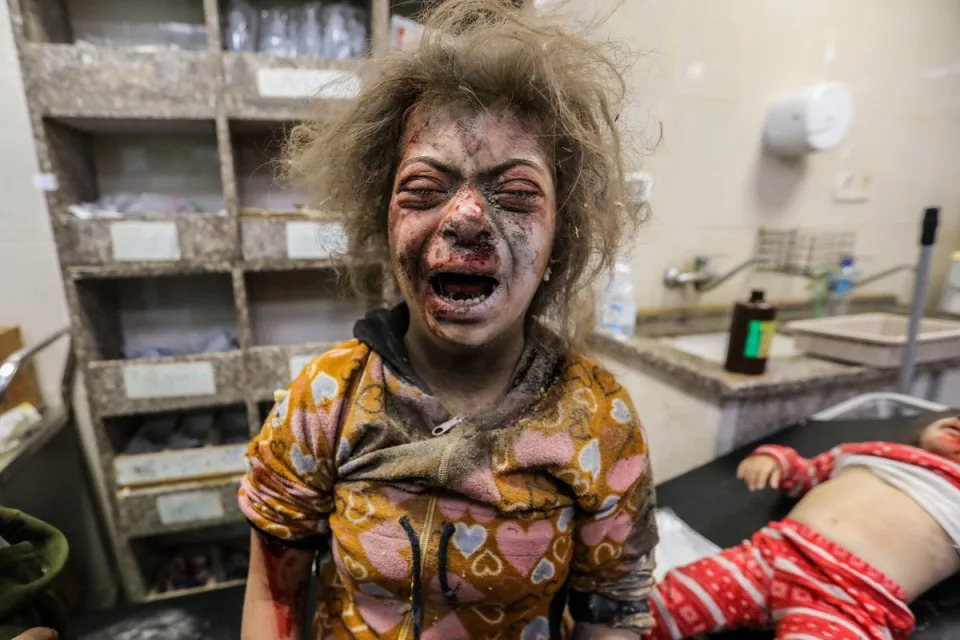
Young children arrive at Nasser Hospital in Khan Younis after being injured in Israeli airstrikes (Getty Images)
This week, Israeli tanks thrust deep into central Gaza after days of relentless bombardment that forced tens of thousands of already displaced Palestinian families to flee to the overwhelmed city of Deir al-Balah along the Mediterranean coast.
“Over 150,000 people – young children, women carrying babies, people with disabilities and the elderly – have nowhere to go,” the main UN organisation operating in Gaza, UNRWA, said in a social media post.
Gaza’s health ministry said on Thursday the humanitarian and health conditions of the now 1.9 million displaced people have reached “catastrophic levels beyond description”.
Half of the displaced are children who are now struggling with dehydration, malnutrition, respiratory and skin diseases and extreme cold, the statement added. Some 50,000 pregnant women, meanwhile, are suffering from thirst and malnutrition.
Amid growing alarm, the UN Security Council last week adopted a resolution to boost humanitarian aid but stopped short of calling for a ceasefire after a week of vote delays and intense negotiations to avoid a United States veto.
The US and Israel oppose a ceasefire, believing it would only benefit Hamas. Washington instead supports pauses in fighting to protect civilians and free hostages taken by Hamas.
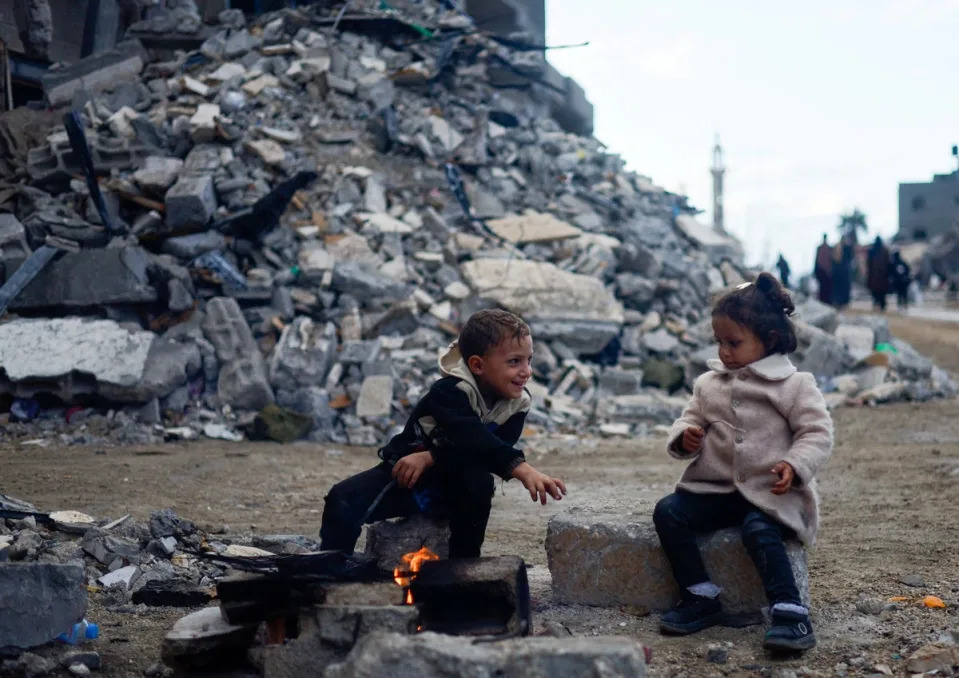
Palestinian children sit by the fire next to the rubble of a house in Khan Younis (Reuters)
Rights groups say without a proper ceasefire it is impossible to tend to the needs of the civilians under such conditions.
“There are around 300,000 destroyed or damaged housing units. It is impossible to provide emergency shelters and do repairs for more than 1.2 million people,” Mr Egeland said.
Israel has defended its actions, saying it has identified a “humanitarian zone” for civilians in an area called Mawasi – which is smaller than London’s Heathrow airport.
“Mawasi is a ‘moonscape’,” Mr Egeland continued. “You can't put 1.5 million people on the moon without water, without shelter, without toilets.”
Mr Denslow said this deadly combination of the geography of Gaza, the density of demographics, the percentage of children, the use of explosive weapons with a wide area affected, and the ferocity of the hostilities had led to the record-breaking casualty toll.
“Children are unable to get away from the front line. There are no safe places. And the death toll is just the top of the pyramid of harm,” he said.
“Below that are serious life-changing injuries, [and] then the fact that people are homeless.
“Below is the mental health impact this will have. Four out of five children in Gaza were already showing signs of depression before the war, which is the fifth conflict any 15-year-old in Gaza would have experienced.
“Their resilience levels have been shot to pieces by recent history that has no endgame in sight.”
'She's alive, she's alive': Dramatic rescue of 10-month-old who survived Israeli airstrikes in Rafah that killed at least 20
Josh Lederman and Lawahez Jabari
Updated Sat, December 30, 2023
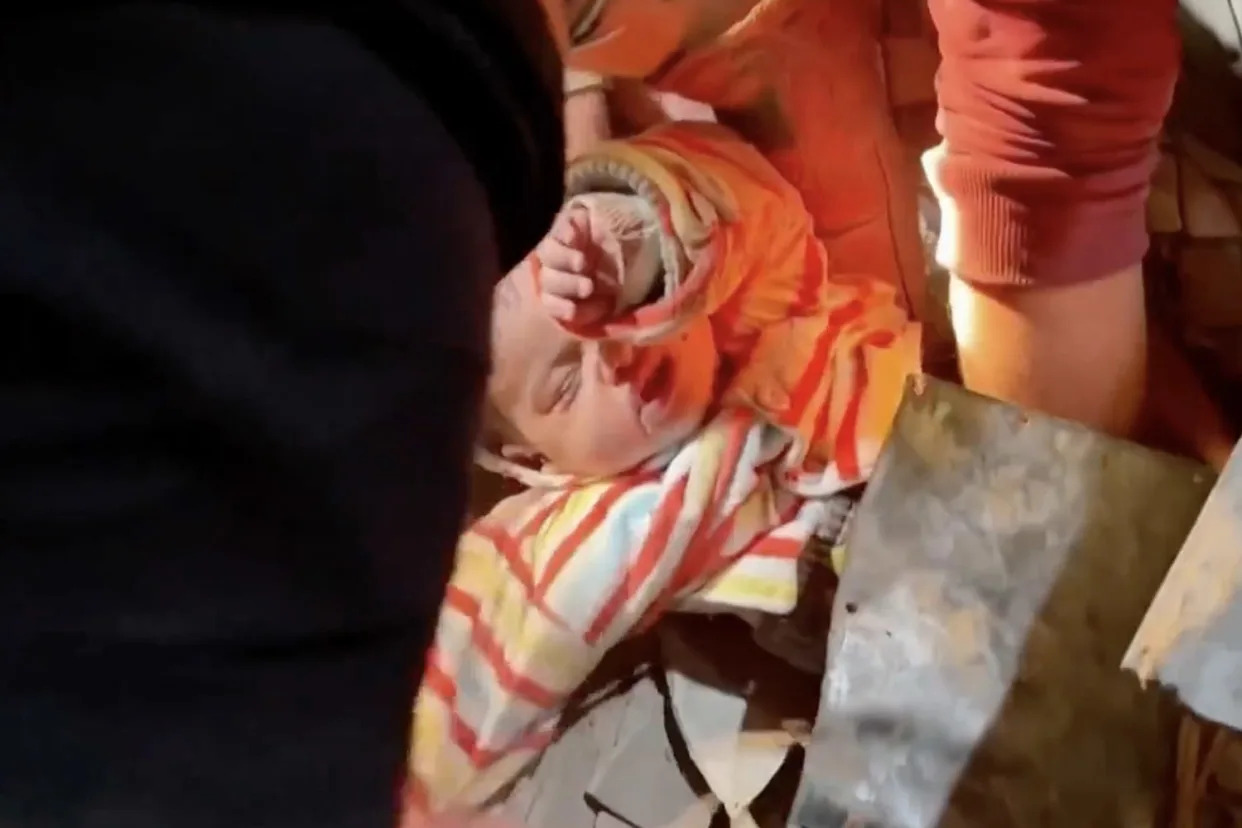
'She's alive, she's alive': Dramatic rescue of 10-month-old who survived Israeli airstrikes in Rafah that killed at least 20
TEL AVIV — In the Gaza darkness, an airstrike rips through Rafah, where Palestinians from across the Gaza Strip are seeking refuge.
The chaotic aftermath plays out like so many devastating scenes from the Israel-Hamas war so far: Buildings are leveled into piles of smoldering rubble. Neighbors dig with their bare hands searching for survivors. The dead and wounded are frantically ferried away.
But this time, covered by a mattress and trapped by debris, a child is found. She’s just 10 months old, and her name is Tala Rouqah.
NBC News’ team in Gaza witnessed her dramatic rescue on Thursday night, when the Hamas-run Palestinian Health Ministry said more than 20 were killed in an Israeli airstrike in Rafah, in southern Gaza, now a major focus of Israel’s military campaign.
Israel’s military hasn’t said what it was targeting, but has said its bombing campaign is designed to dismantle Hamas’ military abilities and rescue Hamas-held hostages.
When Tala is discovered, she is unconscious, but breathing. Volunteers who show up to rescue her chant, “She’s alive, she’s alive” in Arabic.
Protruding from broken concrete just inches from Tala is her mother’s hand. The rest of her mother is submerged in the rubble.
And just a few feet away is Tala’s father, Ahmad Rouqah, also trapped in the wreckage. With the help of rescuers, he is freed, and ecstatic chants ring out from the men who freed him.
Seconds later, baby Tala is freed, too, and carried to the nearby Kuwaiti Hospital by a neighbor.
The next morning, Ahmad is recovering in a different hospital, where he recalls the moments before the strike.
He says the family had fled their home in Gaza City at Israel’s direction to Khan Younis, the largest city in the south, where they stayed with relatives until civilians in that city, too, were told to evacuate. They fled to Rafah, seeking refuge in a house they said had been abandoned and left vacant for several years.
He says they had just finished worshipping during the evening call to prayer and the women of the family were preparing dinner when the building was struck.
“Why, and for what? Only God knows,” Ahmad tells NBC News in Arabic. He says that nobody in his family was part of what he calls the resistance, a reference to Hamas.
Ahmad takes stock of his loss: His mother and wife have both been killed, he says. His son and another daughter, too. And three of his brothers, and his brother-in-law. In all, he says, at least 10 relatives lost their lives.
“Oh god, help me in my misfortune and bring good from it,” he says. “May god accept them in heaven.”
Rapped by grief, Ahmad has yet to see his daughter, until a cousin collects her from the nearby tent city where she’s being cared for and cradles her in his arms. Tala’s leg is broken and in a cast, but she appears otherwise in generally good condition.
Her cousin brings her to Ahmad’s bedside, where the baby breaks into tears when she sees her father — a mix of agony and relief.
He tries to sit up, but is visibly in pain from his injuries. Young Tala is placed in his arms.
She clings to his chest and is soothed, while her father gently sobs. Father and daughter begin the long journey ahead, as the surviving members of a family united by grief.
“Where is your brother, and sister,” he says. “There’s no one left for us.”
This article was originally published on NBCNews.com
Gaza death toll climbs amid fierce fighting in south
Euronews
Sat, December 30, 2023
Palestinian death toll climbs
At least 100 people were killed and 158 injured in central Gaza over the past 24 hours, a Palestinian health official said on Saturday.
In Gaza, at least 21,507 people have now been killed and 55,915 injured in Israeli attacks since October 7.
Some 1,200 people died in Hamas' 7 October attack on southern Israel.
Fierce fighting in Gaza
Intense fighting has been reported between Israeli forces and Hamas militants on Saturday.
Israel is concentrating its military offensive on southern Gaza, particularly around the city of Khan Younis. But it is also conducting operations elsewhere.
In Gaza City, the Israeli Defense Force wrote on X it "eliminated dozens of terrorists" and that "battles took place where further terrorists were eliminated."
On Friday, Israel's Defence Ministry claimed its troops had successfully located and demolished a hideout apartment belonging to Yahya Sinwar, the leader of the Hamas terrorist organization in the Gaza Strip.
A UN official claimed Israeli troops had opened fire on an aid convoy returning from northern Gaza, damaging a vehicle.
Violence is also spilling into the wider region.
Israeli strikes targeted the Damascus airport and Syrian military sites late Thursday and early Friday, causing material losses, according to Syrian sources.
Israel has launched numerous strikes in government-controlled Syria, often targeting Iran-backed groups supporting President Bashar Assad, although Israel rarely acknowledges these actions.
South Africa accuses Israel of genocide
South Africa has initiated a case at the International Court of Justice, accusing Israel of genocide against Palestinians in Gaza and requesting an immediate suspension of Israeli military operations.
Israel vehemently rejected these allegations, calling them 'blood libel' and asserting the case's lack of legal or factual basis.
Israel also accused South Africa of cooperating with Hamas, linking it to the cross-border attack that triggered the ongoing conflict.
Other legal cases have been launched against parties involved in the Israel Hamas war.
In December, rights groups took the UK government to court over its arms exports to Israel amid the catastrophic war in Gaza.
Supported by the International Centre of Justice for Palestinians (ICJP), Palestinian human rights organisation Al-Haq and UK-based Global Legal Action Network (GLAN) want London to immediately suspend lucrative weapons sales to Israel, claiming there is a "clear risk" they are being used in war crimes.
Gaza civilians devastated by humanitarian crisis
Mercy Corps has warned of famine and disease in Gaza, attributing the crisis to relentless fighting and insufficient humanitarian aid.
The organisation claims that aid deliveries to the besieged Palestinian enclave are inadequate, with half a million people facing "catastrophic hunger and starvation."
Meanwhile, UNICEF has delivered at least 600,000 vaccine doses to Gaza to address the escalating health crisis.
A lack of clean water and basic medical supplies in the territory has contributed to the spread of illnesses.
More than 16,800 infants have missed routine vaccines, and UNICEF, along with WHO and UNRWA, is working to administer the arriving vaccines.
Tens of thousands of vaccines for diseases like polio, tuberculosis, measles, and hepatitis have been confirmed by Israeli officials in coordination with UNICEF.
Hamas-run Health Ministry says 187 killed in one day in Gaza Strip
dpa international
Fri, December 29, 2023

Palestinian mother Asmaa Naser (C) mourns the bodies of her twin children, Ahmed and Jihan Naser, who were killed after an Israeli air strike on the Nuseirat camp, at Al-Aqsa Martyrs Hospital in Deir El-Balah in the central Gaza Strip. Ali Hamad/APA Images via ZUMA Press Wire/dpa
A total of 187 people have been killed in one day in fresh Israeli attacks in the Gaza Strip, the Health Ministry controlled by the militant Palestinian organization Hamas said on Friday.
The ministry added that 312 Palestinians were injured.
The total number of Palestinians killed in the Gaza Strip since the start of the war rose to 21,507.
The number was last given on Thursday as 21,320. According to this information, 55,915 other people have been injured.
The figures cannot be confirmed, but the UN and other observers point out that the authority's figures have proven to be credible in the past.
The war was triggered by the worst massacre in Israel's history, carried out by fighters from the Islamist Hamas and other extremist groups on October 7 in Israel near the border with Gaza.
As a result, around 1,200 people were killed on the Israeli side, including at least 850 civilians.
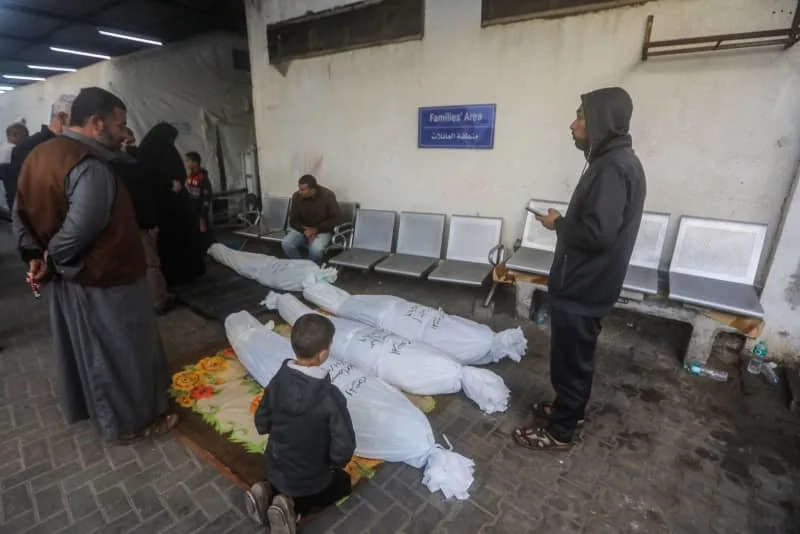
People mourn near the bodies of Palestinians killed after an Israeli raid last night on Rafah in the southern Gaza Strip, at Abu Youssef Al-Najjar Hospital. Mohammed Talatene/dpa
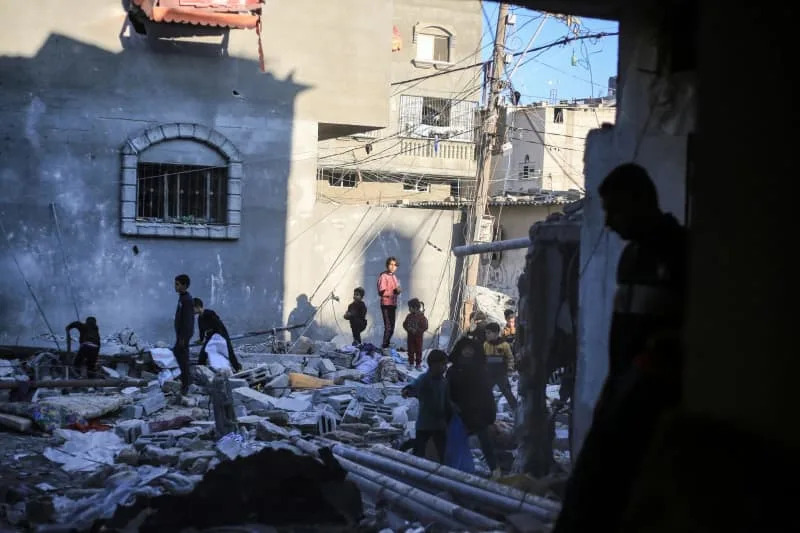
People inspect a damaged building after an Israeli raid on Rafah in the southern Gaza Strip as battles continue between Israel and the Palestinian Hamas movement. Mohammed Talatene/dpa

